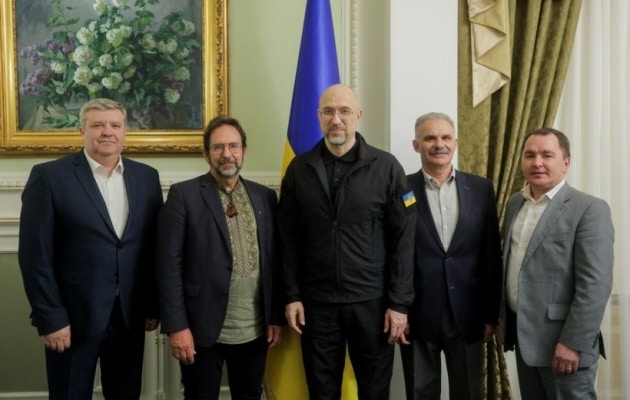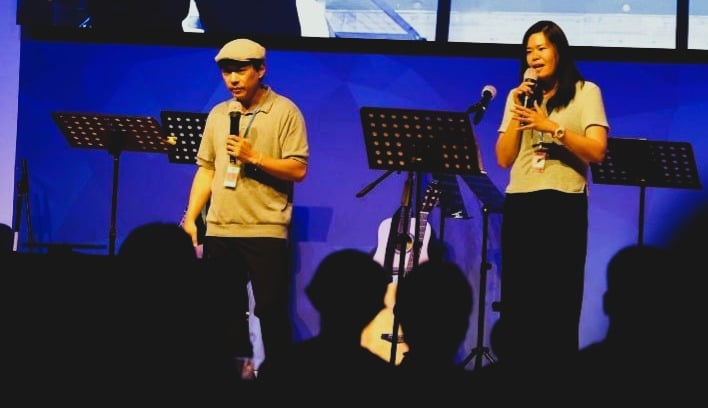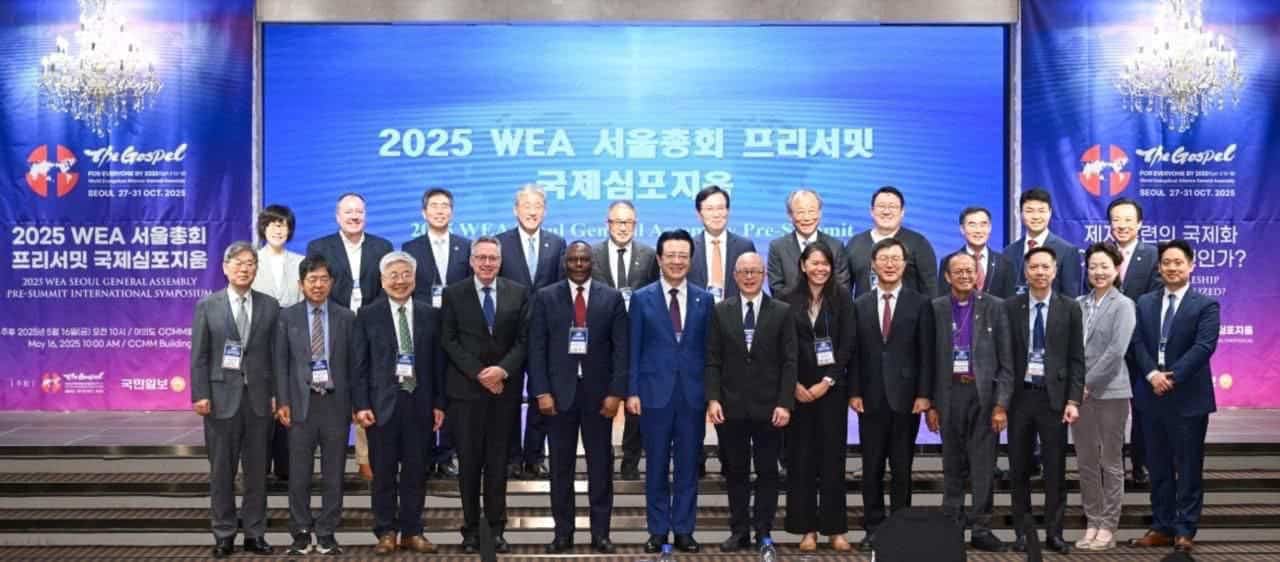Dear Friends,
“We recognize the situation for Christians in the Holy Land is very complex. The ongoing conflict in this region is painful and impacts all our brothers and sisters. In addition, we recognize that Christians view the situation differently and sometimes find these views conflict with one another. In an effort to create ongoing dialogue with our sisters and brothers in this region we provide you with the observations of the Local Council of Evangelical Churches in the Holy Land. As you read the report I would urge you to continue pray for ALL the members of God’s family in this region.”
Geoff Tunnicliffe, International Director
Response to Human Rights of Christians in Palestinian Society
April 25, 2006
Salim J. Munayer, PhD
On behalf of the
Local Council of Evangelical Churches in the Holy Land
Several major Christian media have recently re-printed or referred to a report on persecution of Palestinian Christians, Human Rights of Christians in Palestinian Society by Justus Reid Weiner of the Jerusalem Center for Public Affairs. Since the election of Hamas to a majority of seats in the Palestinian parliament the subject is gaining attention and raising concerns. As a result, news services and magazines such as World Evangelical Alliance Religious Liberty News & Analysis, ASSIST Ministries, and Christianity Today are drawing from Weiner’s report as it attempts to address the human rights of Christians in Palestinian society. The report was met by frustration in the Palestinian Christian community, where leaders felt that it contained inaccuracies and misrepresentations that serve a pro-Israel political agenda.
In the following response, I have been asked by the Local Council of Evangelical Churches in the Holy Land to address some of the issues raised by the report and its distribution in the international Christian community. The purpose is not to defend the track record of the Palestinian Authority on human rights or religious freedom, but to respond to the many inaccuracies within the report that skew the picture of Palestinian Christians’ situation under the Palestinian authority.
Objections raised by Palestinian Christian leaders
First, Weiner’s report was published and quoted without any input from local Christians. Few responses or clarifications were solicited by Christian news media from any Palestinian Christians, even considering the fact that Weiner accuses some leaders of downplaying the persecution for political or other purposes. He directly attacked the credibility of some Palestinian Christian leaders. Several web sites and magazines published the report without asking these same leaders for their comments. If the goal of the report is to advocate on behalf of the Palestinian Christians and give voice to their concerns, why are the responses of the Palestinian Christian leaders disregarded and even ignored.
Second, there is a failure to recognize the political agenda/implications of such a report.
I believe is a standard procedure in journalism to address the sources critically. The report was published by an institution that has an evident political bias. Those who distributed the article did not discuss or acknowledge the pro-Israel slant that is apparent in the publications and web site of the Jerusalem Center for Public Affairs, or explore the idea that the concern for Palestinian Christians under the PA may be influenced by this political inclination.
This is apparent in Weiner’s report as he attributes Muslim-Christian tensions and Christian emigration almost entirely to the increase radicalization of Islam under the PA and quickly dismisses other causes. He explores the impact that living under 30 years of Israeli rule/occupation has on undermining centuries of Muslim-Christian relations in only one paragraph. It is a political statement to disregard the role that Israel has played over the last 40 years in creating a situation on the ground that is nearly unbearable. When one fails to point out that military occupation and the current political conflict and economic situation are major factors for the Palestinian Christians leaving, this is serves a political cause. It absolves Israel of its role in the situation, and points the finger solely at the Palestinian Authority. By distributing and referring to Weiner’s report, Christians are condoning this political agenda.
A major gap in Weiner’s explanations for Muslim-Christian tensions is a discussion of current global trends in Muslim-Christian relations. Often Muslims do not separate between state, religion and culture, and as a result, perceive the West as Christian. For example, they view Western actions, such as the war in Iraq or US involvement in the Israeli-Palestinian conflict, as Christian actions. Prominent Christians such as Pat Robertson, Franklin Graham, and Jerry Falwell make statements about Islam and the Israeli-Palestinian situation that confirm this perception. Muslims project what they perceive is the Western Christian agenda onto the Palestinian Christians, resulting in tension. At present, Muslims make the generalization that Christianity is necessarily associated with Zionism, and as such, Palestinian Christians are Zionist. Therefore the issues between Muslim and Christians are not only due to local radical Islam, but also due to what is happening on a global scale between Muslims and Western Christians.
Weiner outlines in great depth the role of the Palestinian Authority and rise of radical Islam under that authority, instead of examining the many pressures that Palestinian Christians face. Such a one-sided portrayal of the Palestinian Christians’ situation, calls into question the motivation for such a concern about their human rights. From a Palestinian Christian perspective, this type of organization uses the issues of Palestinian Christian persecution at the hands of the PA in order to polarize international Christians and discount the Palestinians’ ability to self-govern.
Third, there are many inaccuracies and misrepresentation in the report. Certainly there is a rift in Muslim-Christian relations and this has lead to violent incidents. Muslim-Christian tensions do exist and are not hidden. Muslim-Christian conflicts worldwide have an affect on Palestinian Muslim-Christian relations, as previously mentioned. In the Palestinian areas, Palestinian Christians face the challenges of living as a minority among Palestinian Muslims. They are concerned about their status and treatment as a minority. There is the added factor that minorities suffer in times of chaos and a weak political system. Certain disputes or incidents that arise are attributed to religious tensions, when they may not have started as such. The rise of Islamic parties causes concern, not because it will target Christians, but because to a certain degree it will marginalize Christians in the political arena. It also has implications for the lifestyle of the Christian population; (one example of this could be male and female interaction in public). These are all challenges that Christians living in the Palestinian territories face.
The argument that myself, and many others, have with Weiner’s report is that many of the incidents are taken out of proportion or generalized, misrepresenting the reality of the situation in order to demonize the Palestinian Authority and its Muslim population. In the following sections, I would like to address specific points in Weiner’s report.
Research and Analysis Methods
In my opinion, the research and quotes he uses are insufficiently discussed and used only to prove his point, leaving much to be desired from an academic or scholarly standpoint.
One example of this is the following:
“All of the problems affecting Christian Palestinians have been exacerbated by the increasing political hostility resulting from the second intifada. Professor Tsimhoni states that, ‘the growing influence of the Islamic movement over Arab society during the intifada has caused growing violence toward Christians and their institutions, deepening the identity crisis of many Christians and their despair over their future in the are” (Tsimhoni 1993:29).” (p. 7).
These statements are incongruent. First, Weiner uses a quote that is discussing the first intifada to refer and support his statement about the second intifada. Second, he states that the problems are exacerbated by the political hostility and then quotes Tsimhoni discussing the growth of the influence of Islam. The two statements are not connected logically or chronologically.
Throughout the report, Weimar uses quotations and anecdotes. While the anecdotes are important and useful, he does not answer important research questions. How many people did he talk to? How did he select interviewees? To what degree do the incidents and trends he describes (emigration, extortion, etc.) take place in comparison to the Muslim community? Such information would be helpful in determining the scale and frequency of persecution. While he implicates the PA in sanctioning anti-Christian activity, he lacks documentation of anti-Christian policies, basing his claims mainly on speculation and assumption.
In addition, when Weiner provides historical and factual information, it is often misrepresented. One example is his claim that Arafat changed the municipal border of Bethlehem to alter the Muslim-Christian population balance. According to Daphna Tsimhoni, this took place under Jordanian rule, before 1967. Jordanian authorities added the refugee populations of refugee camps created as a result of the 1948 war to the municipal population of Bethlehem.[1] He also claims that the PA encouraged emigration from Hebron to Bethlehem in order to Islamicize the town. What about other factors – such as economic opportunities and proximity to Jerusalem – that might provide incentive for migration from Hebron to Bethlehem? Again, Weiner neglects alternate explanations, and without documentation, speculates that the PA’s motivation is to Islamicize the region and to undermine Palestinian Christians.
Denial and Self-Blame in the Christian Community
Weiner delivers serious accusations to some of the leadership among the Palestinian Christian community.
“For fear of jeopardizing the standing of the PA and the Palestinian community, or, more simply to achieve political positioning within the social hierarchy, Palestinian Christian leaders obfuscate the situation as it affects their constituents. In addition to the fear among Christians of appealing to the PA, there is widespread denial on the part of the Palestinian Christian leadership, typified by failure to report the abuses that occur. (p. 22)”
One does not have to look far to find these leaders and others speaking out. Labib Madanat, who Weiner mentions, has gone public with reports threats against the Bible Society in Gaza and Beir Zeit. In September 2005, the Daily Telegraph ran an article where Christians were open about the conflict and persecution they faced at the hands of Muslim groups.[2]
In conjunction with claiming that Palestinian Christian leadership is downplaying reports of persecution, Weiner states that there is a disparity between the leaders and the lay community, based on a study by Sabella and a quote from a Christian resident. Sabella’s study showing mistrust of Palestinian Christian leaders refers not to the leaders mentioned above, but reflects the attitude of Palestinian Christians towards traditional church establishments. The research was conducted among mainline, Orthodox and Catholic churches, and also relates to the Greek Orthodox selling church lands. Undoubtedly, tensions exist between the institutions and the community, however this does not stem from Muslim-Christian relations as Weiner implies.
Radicalization of the Palestinian Muslim community under the PA.
Weiner states, “It must be acknowledged that the radicalization of Palestinian Muslim Communities under the PA is becoming an increasingly dangerous threat to Christian communities, to individuals and to the mode of life they practice.” Later he repeats,
“While traditional Islamic doctrines explain the status of Christian residents of Muslim societies as second-class citizens, this factor alone does not explain the accentuated hostility expressed toward them in recent years, which must be read as a sign of religious radicalization – more specifically, the rise of Islamic extremism in the PA-controlled territories.” (p.7)
Weiner ignores the context and history of this rise of Islamic extremism and attributes this rise to the PA alone. Many causes, prior to the establishment of the PA, have contributed to this radicalization. The trend of radicalization is taking place throughout the Middle East. The writer disregards other factors that contribute to this radicalization, such as the on-going political conflict and the deterioration of economic conditions.
Christians under Palestinian Authority Rule
Weiner discusses the role of Sharia in Palestinian law, again drawing erroneous conclusions. “By granting primacy to Sharia over other legal sources, including international human rights standards, the PA puts Palestinian Christians in a precarious legal situation, as the Sharia deems them unequal to their Muslim counterparts” (p.5). While the Palestinian Basic Law ratified in 2002 does state that “principles of Islamic Shari’a shall be the main source of legislation,”[3] it includes other sources of legislation that do allow for human rights. “All Palestinians are equal under the law and judiciary, without discrimination because of race, sex, color, religion, political views, or disability.”[4]
It is also important to add that the Palestinian Authority insisted on a Christian quota in the Palestinian Legislative Council, securing seats for Christian representatives from Gaza, Ramallah, Bethlehem and Jerusalem districts. Christian holidays such as Christmas and Easter are declared national holidays.
Emigration of Palestinian Christians
Emigration of Palestinian Christians is one factor that many point to as evidence of persecution. As Weiner describes Palestinian Christian’s situation from the birth of Islam through the Ottoman Empire, he omits the period of history between 1948 and 1994. He does not speak about the fact that with the establishment of the state of Israel in 1948, Christians were forced out of the area as refugees. Many Palestinian Christians dispersed throughout the Middle East, Europe and North America. Christian neighborhoods like Baka in Jerusalem and large Christian communities in Lod, Ramle, and Jaffa became refugees. Even before that, the first waves of Christians leaving the land were before the First World War. Weiner does not address the impact of those wars on Palestinian Christians and the resulting decrease in their numbers. There should be some inclusion of emigration trends that took place before the PA took power, unless he intends to apply that Christians only began to leave following the Oslo agreements.
Much research has been done on the subject of the decline of the Palestinian Christian population. According to demographic research done by myself and Bernard Sabella, one factor in the decrease in the percentage of the numbers of Christians in both the PA and Israel, is a low natural birth rate in comparison to Muslims and to Jews. In addition, the median marriage age is much higher than in the Muslim community, which means they have fewer children at a later age. The facts that Christians tend to be middle class, city-dwellers, educated, multi-lingual, and have a high number of relatives abroad give them the opportunity for better life outside the country, providing incentive to emigrate. [5]
These issues are not addressed in Weiner’s paper. He offers the following,
“In recent years, religious persecution has been an increasingly important contributory factor in Christian emigration from the PA areas. In the Jerusalem suburb of Beit Sahour, an 80 percent Christian town near Bethlehem, a survey found that 51.2 percent of respondents are considering emigration due to the ‘difficult political conditions.’ (Latin Patriarchate 2001). According to Bernard Sabella, 41 percent of Palestinian Christians in the territories perceive emigration as the most important threat to Christians living under PA control. Next amongst the concerns of the Christians is economic deterioration (24 percent) and Islamization (17 percent.). (Sabella 2001).”
Weiner says little more about the fact that nearly half of the respondents consider the political situation the determining motivation, and focuses on Islamization which only 17 percent consider as impetus for emigration.
He fails to examine the other factors, which leads the reader to overestimate the role of Islam in causing a decline Palestinian Christian population. There is also a lack of information and comparison to the rates and causes of Muslim emigration.
Education and School Curricula
Weiner’s discussion of Palestinian education and the influence of militant Islam in PA-run schools is incomplete and inadequate. Weiner claims that Christians are forced to go to private schools because the curriculum taught in the schools promotes violence (p.8). It is true that they are private and more expensive, and as such they offer a high quality of education. Many Muslims also attend Christian schools. In reality, the same curriculum is used in both private and public schools. He enters a classic debate about Palestinian school curriculum and the degree to which is incites hatred and includes anti-Israel propaganda. Much research has been done on this issue, and the curriculum has undergone the scrutiny of the EU, and it has greatly improved. Certainly there remains room for improvement, although this is true in Israeli schools as well.
He quotes Murray as saying that there is a ‘culture of death’ taught in schools and a glorification of suicide bombers, etc. (p. 8). Israel/Palestine Center for Research and Information researched the content of Palestinian and Israeli curricula. While much improvement is needed, they found that Palestinian texts have made significant strides in advocating tolerance.[6]
The area of educational curricula is one in which the PA has shown significant cooperation with Christian educational institutions. The PA called the churches together asking them to create a curriculum for teaching Christian religion, something they were unable to accomplish without the assistance and backing of the PA. As a result, Christians have produced a PA-recognized curriculum for teaching Christianity in religion classes for Christian students. In the past, only Muslims completed matriculation exams in religion (namely Islam), and it was not required of Christians. Now Christians are required to study Christianity and take a matriculation exam in Christianity.
In addition, the Bethlehem Bible College, which has a curriculum similar to most international Bible colleges, has received accreditation from the PA ministry of higher education as a Bible college. The Bethlehem Bible College was permitted to buy land and their major building project approved by the PA. The Bethlehem Bible College media department produces a TV program about Christianity that is broadcast in Bethlehem. The only condition put on the broadcast is that it does not attack other religions. Weiner fails to include this important information on Christian institutions and programs that are functioning and recognized by the PA.
Muslim Converts
In discussing persecution it is important to differentiate between populations. As one Palestinian evangelical pastor put it, “The question of persecution of Palestinian Christian is quite different than the persecution of an ‘Muslim Background Believer’ [Muslim convert to Christianity] in this area. It’s almost normal that an MBB who has made himself/herself known will face some level or persecution and we have cases.” Converts certainly face the hostility of their communities, and the same is true for Jewish converts in Israel. Perhaps the most severe persecution that Muslim converts face comes at their hands of their relatives, and this is a phenomenon in many countries both within and outside the Middle East. This is not necessarily connected to the state’s treatment of the religious minority group as a whole. There still is no test case of the Palestinian Authority putting a Muslim convert on trial for their religious conversion or faced legal action.
Weiner’s uses sources such as David Ortiz and William Murray who indicate that the Palestinian Authority has persecuted converts to Christianity. Several human rights organizations have investigated the claims of David Ortiz, who reports that the PA arrests and persecutes Muslim converts to Christianity in the mid-1990’s. According to extensive investigations by LAW and the Palestinian Human Rights Monitoring Group, these claims are questionable, and there are other possible explanations for the arrests, among them land-selling and prior criminal activities. According to Palestinian Human Rights Monitoring Group in a 1997 press release,
“It is even unclear whether there is a PA policy to harass this fraction of the small evangelical community. The comments made by officials notwithstanding, the PHRMG was only able to document two cases (Tarik and Henni) in which individuals were undoubtedly harassed because of their faith. No one has been arrested on charges of violating the anti-missionary law (unlike the dozens of arrests for land-dealing). Furthermore, in a society in which rule of law is continually flouted, in which thousands of people have had their human rights violated, such a small number of cases is not sufficient to establish that there is an organized policy of Christian persecution. Therefore we conclude that individual cases not withstanding, the PA does not have a policy of harming Christians or Christian converts from Islam. Although evangelical Christians have suffered from the hostility of their communities, it does not appear as though the PA has a policy against evangelical Christianity.”[7]
Criminal action or religious persecution?
In several sections, Weiner outlines a serious of crimes against women and against Christian businesses. Here again, he attributes the causes of these crimes to Muslim-Christian conflict and does not examine the possibility of criminal intentions, mafia-like corruption (which exists in most countries and is not religiously motivated), and also the effect of the political situation on the economic conditions.
For example, in a section discussing “Boycott and Extortion of Christian Business,” Weiner quotes a Lutheran pastor claiming that a Muslim boycott forced many stores in Bethlehem’s Nativity Square out of business. Most of the stores in Nativity Square are tourist shops, which lost nearly all of their business during the second intifadeh when tourism dropped severely.
Concerning Weiner’s reports of rape and abuses of women, these are serious incidents that must be addressed. Undeniably there are incidents and problems in the legal system in dealing with abuse, harassment and rape of both Christian and Muslim women. Weiner draws his own conclusions that these crimes against women are religious persecution instead of criminal acts. He implies that the abuses are widespread and targeted specifically towards Christian women, and yet provides no documentation to prove his claims.
Conclusion
Undoubtedly, Palestinian Christians want to show that they are part of Palestinian people and they have played an important role in the Palestinian national movement. At the same time, they wish to distance themselves from the Islamic parties and radical Islamic groups. They find themselves in a delicate position, where Muslim-Christian tension is on the increase due to a number of factors and yet they, as Palestinians, also experience the tensions of the Israeli-Palestinian conflict. In addition, they are of strategic significance both to Palestinians and to Israel, can be used as pawns, showing the PA to be deficient in the area of human rights and religious freedom and thus incapable of establishing a democratic nation. They also play an important role in gaining support from the international Christian community as keepers of the Holy places and a Christian presence in the Holy Land. At the same time, they are widely neglected and overlooked by some of the international Christian community, which is quick to portray them as a persecuted minority amidst the Muslim majority, rather than understand their real experiences and needs as Palestinian Christians.
[1] Tsimhoni, D. (1993). Christian Communities in Jerusalem and the West Bank since 1948. London: Praeger, p. 7.
[2] De Quetteville, H. “’Islamic mafia’ accused of persecuting Holy Land Christians.” Daily Telegraph. Sept 9, 2005.
[3] Article 4, Palestinian Basic Law, May 29,2002.
[4] Article 9, Palestinian Basic Law, May 29, 2002.
[5] Palestinian Human Rights Monitoring Group, ‘Forward’ in press release, 20 January 1997
[6] Reports I & II. “Analysis and Evaluation of New Palestinian Curriculum. Reviewing Palestinian Textbooks and Tolerance Education Program.” IPCRI, March 2003 and June 2004.
[7] Palestinian Human Rights Monitoring Group, ‘Forward’ in press release, 20 January 1997; and Seitz, C “A Palestinian’s refuted story of religious persecution is replayed in US halls of power.” May 22, 1998 Vol 4, No. 47.





Stay Connected